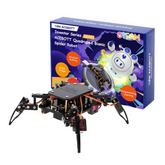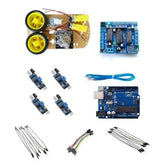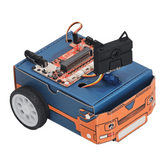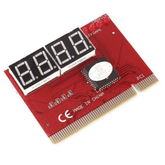5 Common Mistakes Beginners Make in Robotics (and How to Avoid Them)
Summary
The world of robotics has transformed from an exclusive domain of expert engineers into an accessible field where enthusiasts and beginners can bring mechanical creations to life.
From simple line-following robots to sophisticated autonomous systems, the barriers to entry have never been lower. Yet this accessibility comes with challenges that many newcomers face as they embark on their robotics journey.
Beginners entering the robotics field today have unprecedented access to affordable components, comprehensive tutorials, and supportive communities.
However, the excitement of building a first robot often leads to overlooked fundamentals and rushed implementations. These missteps can result in non-functioning prototypes, damaged components, and frustrated learners questioning their capabilities.
Understanding these common pitfalls before starting a project can mean the difference between an enriching learning experience and a discouraging setback.

Importance of Understanding Common Mistakes Beginners Make in Robotics
Learning from mistakes represents a fundamental part of the engineering process, but recognizing potential errors before they occur accelerates skill development significantly.
When beginners understand the typical challenges they'll encounter, they can approach projects with realistic expectations and appropriate preparation. This awareness transforms obstacles from roadblocks into manageable learning opportunities.
The robotics mistakes beginners make often stem from gaps in foundational knowledge rather than lack of creativity or intelligence.
Electronics and robotics fundamentals serve as the backbone for successful projects, yet many newcomers rush past these essentials in their eagerness to build complex systems.
A solid grasp of basic principles—from understanding voltage and current to recognizing how sensors interface with microcontrollers—prevents countless hours of troubleshooting and component replacement.
Trial and error remains valuable in robotics learning, but structured knowledge significantly reduces the time spent on preventable mistakes.
Beginners who invest time understanding common errors develop stronger problem-solving skills and build more reliable robots.
This foundation enables them to tackle increasingly sophisticated projects with confidence, knowing they've established proper practices from the start.
5 Common Mistakes Beginners Make in Robotics (and How to Avoid Them)
Neglecting Basic Electronics Knowledge
One of the most prevalent common mistakes in robotics involves jumping into complex builds without mastering fundamental electronics concepts.
Many beginners assume they can learn electronics simultaneously while building their first robot, leading to confusion when circuits don't behave as expected.
Understanding how resistors, capacitors, transistors, and other components interact forms the essential foundation for any robotics project.
The relationship between voltage, current, and power directly impacts robot functionality and component longevity. Beginners who skip these fundamentals often encounter mysterious component failures, inconsistent robot behavior, or complete system breakdowns.
A motor that draws too much current from an underpowered supply, sensors receiving incorrect voltage levels, or microcontrollers damaged by improper connections all trace back to insufficient electronics knowledge.
How to avoid this mistake:
- Start with basic electronics tutorials before attempting robot construction
- Learn to read circuit diagrams and datasheets for components
- Practice building simple circuits on breadboards to understand component behavior
- Study voltage requirements and current ratings for all components in your project
- Invest time understanding series and parallel circuits before connecting multiple components
Poor Planning and Unclear Project Goals
Another significant entry in the beginner robotics guide to mistakes involves starting projects without clear objectives or proper planning.
Enthusiastic beginners often purchase components impulsively or begin construction without defining what their robot should accomplish.
This lack of direction leads to incomplete projects, wasted resources, and mounting frustration as the build progresses without purpose.
Robotics project mistakes frequently occur when builders fail to create a requirements document outlining specific goals, capabilities, and constraints.
Without these defined parameters, projects drift endlessly through modifications and "improvements" that never reach a functional endpoint.
Clear planning includes determining the robot's purpose, identifying necessary components, establishing realistic timelines, and defining success criteria.
How to avoid this mistake:
- Define specific, measurable goals before purchasing any components
- Create a written plan detailing robot capabilities and limitations
- Research similar projects to understand scope and complexity
- Break large projects into smaller, achievable milestones
- Document your design decisions and expected outcomes for each phase
Incorrect Wiring and Component Placement
Wiring mistakes represent some of the most common and frustrating issues beginners encounter in robotics. Improper connections can cause immediate component failure, intermittent operation, or subtle malfunctions that prove difficult to diagnose.
Placing components too close together creates heat buildup and increases short circuit risks, while inadequate wire management leads to tangled connections that complicate troubleshooting.
How wiring mistakes affect robot performance extends beyond simple connection errors. Poor wire routing introduces electrical noise that disrupts sensor readings, inadequate gauge wire causes voltage drops that starve components of power, and loose connections create intermittent failures that appear and disappear unpredictably.
These mistakes in robot design compound as projects grow more complex, making systematic wiring practices essential from the first prototype.
How to avoid this mistake:
- Double-check all connections against circuit diagrams before applying power
- Use appropriate wire gauges for current requirements of each circuit
- Implement color-coding systems for power, ground, and signal wires
- Maintain adequate spacing between components for heat dissipation and maintenance
- Test individual subsystems before integrating them into the complete robot
Overlooking Software Fundamentals and Programming Errors
Programming mistakes represent a major category of common mistakes in robotics that beginners underestimate.
Many newcomers focus intensely on hardware construction while treating software as an afterthought, resulting in robots with solid mechanical builds but unreliable behavior.
Programming mistakes common in beginner robotics projects include poor code structure, lack of error handling, and failure to test individual functions before integration.
Robotics debugging tips emphasize the importance of systematic testing and proper logging practices. Beginners often write large blocks of code and test everything simultaneously, making it nearly impossible to identify where problems originate.
Without strategic print statements, data logging, or breakpoint debugging, finding the source of erratic robot behavior becomes an exercise in frustration.
How to avoid this mistake:
- Learn programming fundamentals before attempting robot code
- Write and test small code sections incrementally rather than complete programs at once
- Implement logging and debug output to monitor robot behavior during operation
- Comment your code thoroughly to understand logic when revisiting projects
- Use simulation environments to test algorithms before deploying to physical hardware
Skipping Testing Phases and Rushing Prototypes
Robotics prototyping mistakes frequently occur when beginners rush to see their complete robot operational without proper testing of individual components and subsystems.
This eagerness to reach the finish line leads to complex systems where multiple unknown problems overlap, creating debugging nightmares. Testing each sensor, motor, and circuit independently before integration reveals issues when they're still simple to fix.
Many robotics project tips emphasize the critical importance of staged testing and validation. Beginners who skip these phases often discover fundamental design flaws only after investing significant time in assembly and programming.
Creating a testing protocol that validates each component, then each subsystem, and finally the integrated system catches problems early when solutions remain straightforward.
How to avoid this mistake:
- Test every component individually before incorporating it into your robot
- Create a systematic testing checklist that covers all robot functions
- Document test results to track performance and identify patterns in failures
- Build simple test fixtures to validate component behavior in isolation
- Accept that thorough testing saves time compared to debugging complex integrated systems
Conclusion
Success in robotics requires more than enthusiasm and creativity—it demands systematic approaches, foundational knowledge, and patience through inevitable challenges.
The robotics tips for beginners outlined in this guide address the most significant obstacles newcomers face, providing clear pathways to avoid robotics mistakes that derail projects and discourage learners.
Building robots teaches valuable lessons about engineering, problem-solving, and persistence. Each mistake represents an opportunity to deepen understanding and refine skills.
By recognizing these common pitfalls early and implementing preventive strategies, beginners position themselves for successful projects and continuous growth.
The journey from simple circuits to sophisticated autonomous systems becomes more rewarding when built on solid foundations and thoughtful practices.


















